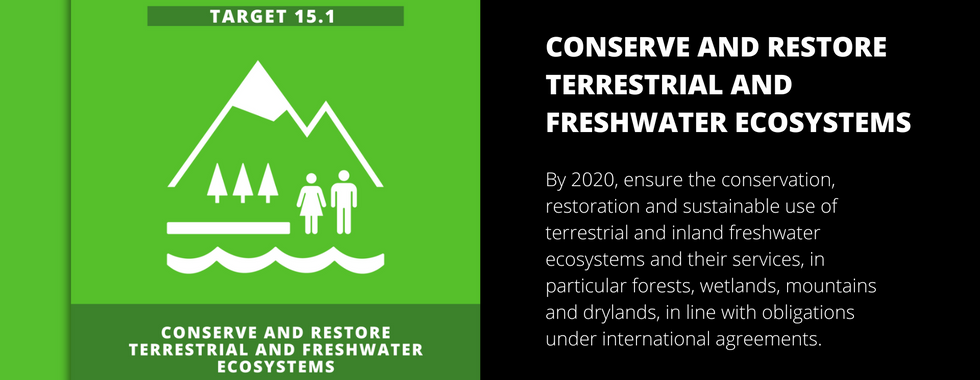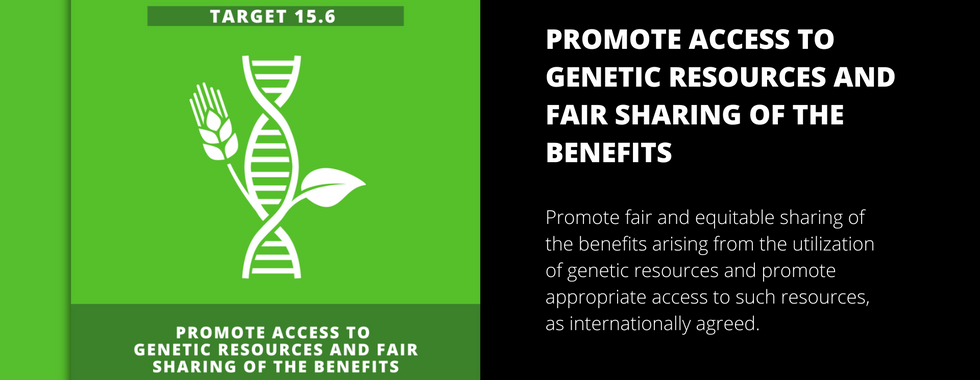Life on Land: Promote Sustainable Use of Terrestrial Ecosystems
- Veronica Spark

- Jan 15
- 3 min read
Updated: Feb 22

Every year, 10 million hectares of forest are lost, and nearly one million species face extinction due to human activities. Sustainable Development Goal 15 (SDG 15) aims to protect, restore, and promote the sustainable use of terrestrial ecosystems, manage forests sustainably, combat desertification, and halt biodiversity loss. Forests, wetlands, and biodiversity are crucial for maintaining ecological balance, regulating climate, and supporting human livelihoods. However, deforestation, habitat destruction, and unsustainable land practices are rapidly degrading the planet’s ecosystems.
Why Life on Land Matters
Protecting life on land is essential for:
Preserving biodiversity to maintain healthy ecosystems and food security.
Combating climate change by protecting carbon sinks such as forests and wetlands.
Preventing land degradation to sustain agriculture and water supplies.
Supporting Indigenous and local communities who depend on forests and wildlife.
Ensuring economic resilience through sustainable land-use practices.
SDG 15: Life on Land Targets
SDG 15 outlines key targets to safeguard and restore terrestrial ecosystems:
Target 15.1: Conserve Terrestrial and Inland Freshwater Ecosystems – Protect and restore forests, wetlands, and mountains.
Target 15.2: Promote Sustainable Forest Management – Increase afforestation, reforestation, and responsible timber production.
Target 15.3: Combat Desertification and Restore Degraded Land – Ensure land degradation neutrality by restoring damaged ecosystems.
Target 15.4: Ensure Conservation of Mountain Ecosystems – Protect mountain biodiversity and water supplies.
Target 15.5: Take Urgent Action to Reduce Biodiversity Loss – Address threats to endangered species and protect natural habitats.
Target 15.6: Promote Equitable Use of Genetic Resources – Ensure fair sharing of benefits from biodiversity and genetic materials.
Target 15.7: End Poaching and Illegal Wildlife Trade – Strengthen measures to prevent wildlife trafficking.
Target 15.8: Prevent and Control Invasive Species – Reduce the spread of harmful non-native species.
Target 15.9: Integrate Ecosystem and Biodiversity Values into Policies – Mainstream biodiversity protection into national planning.
Target 15.a: Mobilize Financial Resources for Conservation – Increase investment in sustainable land use and biodiversity projects.
Target 15.b: Support Sustainable Forestry and Land Management – Provide incentives for responsible land stewardship.
Target 15.c: Enhance Global Efforts to Combat Poaching – Strengthen international collaboration to eliminate illegal wildlife trade.
The Role of Social Entrepreneurs in Preserving Life on Land
Social entrepreneurs are leading innovative solutions to restore and protect ecosystems. Their impact includes:
Reforestation and Land Restoration – Developing large-scale tree-planting initiatives to combat deforestation.
Sustainable Agriculture and Land Use – Promoting regenerative farming practices to maintain soil health.
Wildlife Conservation and Anti-Poaching Initiatives – Using technology and community-based approaches to protect endangered species.
Eco-Tourism and Sustainable Business Models – Encouraging responsible travel and conservation-based economic activities.
Developing Nature-Based Solutions for Climate Resilience – Implementing projects that leverage natural ecosystems to mitigate environmental risks.
Examples of Social Enterprises Preserving Life on Land
1. Ecosia – A Search Engine That Plants Trees
Ecosia reinvests search engine ad revenue into global reforestation projects, supporting biodiversity and carbon sequestration.
2. BioCarbon Engineering – Drone-Powered Reforestation
This initiative uses drones to plant trees efficiently, helping restore degraded landscapes.
3. Wildlife Works – Protecting Forests Through Carbon Credits
Wildlife Works generates funding for forest conservation through carbon offset programs.
4. Agriprotein – Turning Food Waste into Sustainable Livestock Feed
Agriprotein uses insect farming to upcycle organic waste, reducing land degradation and pollution.
5. The Rainforest Alliance – Supporting Sustainable Land Management
This venture certifies sustainable agriculture and forestry practices to promote responsible land use.
Conclusion: Restoring and Protecting Life on Land
SDG 15 calls for urgent action to reverse environmental degradation and sustain ecosystems. Social entrepreneurs are at the forefront of these efforts, driving reforestation, conservation, and sustainable land-use practices.
By supporting and investing in these initiatives, we can ensure that forests, wildlife, and natural resources thrive for future generations.






























